The Parabolic SAR indicator offers traders a unique perspective on short-term market dynamics, providing critical insights into trend reversals and strength. Understanding its calculation method and implications can significantly enhance trading strategies.
However, the real value lies in exploring the seven key insights that delve deeper into the indicator's functionality. From market analysis to day trading applications, each insight sheds light on different aspects of the Parabolic SAR's potential.
By uncovering these best practices, traders can harness the full power of this tool to navigate the complexities of the financial markets with precision and confidence.
Parabolic SAR Key Functionality
With its primary purpose centered on identifying potential trend reversals, the Parabolic SAR indicator plays a crucial role in technical analysis within financial markets. The indicator, represented by dots on a price chart, provides valuable signals to traders.
These dots act as a trailing stop, adjusting based on the direction of the trend. When the price crosses above the dots, it may indicate a potential downtrend, prompting traders to consider selling. Conversely, if the price crosses below the dots, it could signal an uptrend, suggesting a buying opportunity.
This dynamic functionality allows traders to secure profits by using the Parabolic SAR as a guide for setting stop losses. The indicator's adaptability to different trading styles and risk tolerances further enhances its utility in the trading process.
Understanding the key functionality of the Parabolic SAR is essential for traders looking to effectively utilize this indicator in their technical analysis strategies.
Understanding Parabolic SAR Calculation
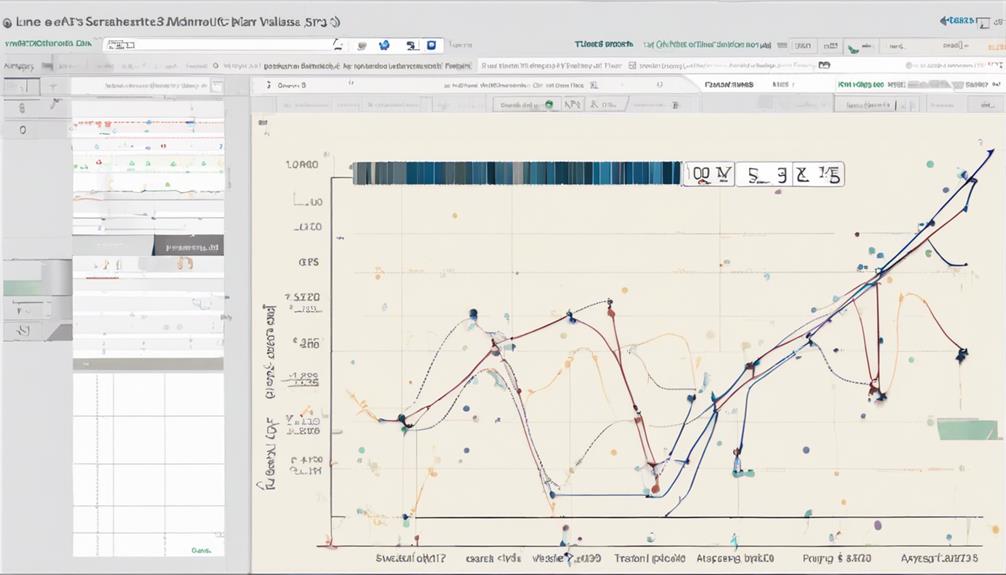
The calculation of the Parabolic SAR involves determining the Extreme Point (EP) and adjusting the Acceleration Factor (AF) based on price movements.
Understanding the SAR formula is crucial for identifying potential price trend reversals and analyzing the indicator's signals accurately.
SAR Calculation Formula
In the realm of technical analysis for trading strategies, the Parabolic SAR calculation formula hinges on establishing an initial Extreme Point (EP) derived from the highest high or lowest low. The formula incorporates an Acceleration Factor (AF) that begins at 0.02 and increases by 0.02 until reaching a maximum of 0.2.
AF adjusts based on price movement, with higher values indicating stronger trends. Traders should monitor price movements over at least five periods to accurately calculate the Parabolic SAR. This calculation involves adjusting the AF for new extreme highs or lows to effectively track trend acceleration.
Price Trend Reversals
Establishing a firm grasp of the Parabolic SAR calculation method is essential for effectively identifying price trend reversals in trading analysis.
The Parabolic SAR determines trend reversals by utilizing an initial Extreme Point (EP) and an Acceleration Factor (AF). As the AF increases, reaching a maximum of 0.2, the proximity of the SAR dots to price changes is adjusted accordingly. Higher AF values cause the SAR dots to move closer to the price, indicating accelerated trend movements.
Understanding this calculation is crucial for the accurate identification of trend reversals. Traders can assess market trend direction by observing the position of the SAR dots relative to the price, providing valuable insights for making informed trading decisions.
Market Analysis With Parabolic SAR
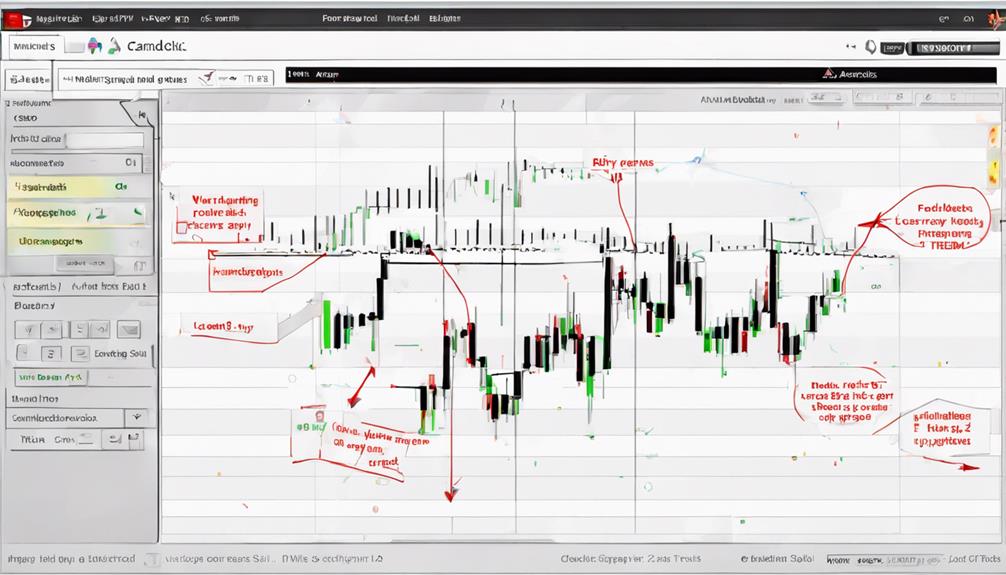
Market Analysis With Parabolic SAR involves interpreting SAR signals for trend direction and reversal identification, crucial for traders making informed decisions.
By understanding the dots' placement relative to price, traders can anticipate potential shifts in market momentum.
This analysis method provides valuable insights into entry and exit points, optimizing trading strategies for improved profitability.
SAR Signals Interpretation
Amidst the dynamic landscape of technical analysis, deciphering SAR signals in relation to price movement offers traders invaluable insights into potential market trends and strategic entry/exit points. SAR signals positioned above the price typically indicate a downtrend, while signals below the price suggest an uptrend.
Traders closely monitor new SAR signals crossing the price as they signify potential trend reversals or entry/exit points. Parabolic SAR is most effective in trending markets, providing clear signals for decision-making.
Traders utilize SAR signals to implement trailing stop-loss orders, which help secure profits during market movements. Understanding the position and movement of SAR dots relative to price is crucial for effective market analysis and informed decision-making strategies.
Trend Reversal Identification
The identification of trend reversals through the implementation of Parabolic SAR involves closely monitoring the plotting of dots above or below the price chart based on market direction. These dots act as pivot points, offering potential buy or sell signals for traders. Traders utilize Parabolic SAR to assess trend momentum, aiding in determining optimal entry and exit points.
Understanding the relationship between the dots and price action is essential for effectively interpreting trend reversal signals. Additionally, combining Parabolic SAR with other indicators can strengthen trend reversal identification and enhance overall trading strategies. By integrating these tools, traders can make more informed decisions and improve their ability to capitalize on market movements efficiently.
Trading Strategies Using Parabolic SAR
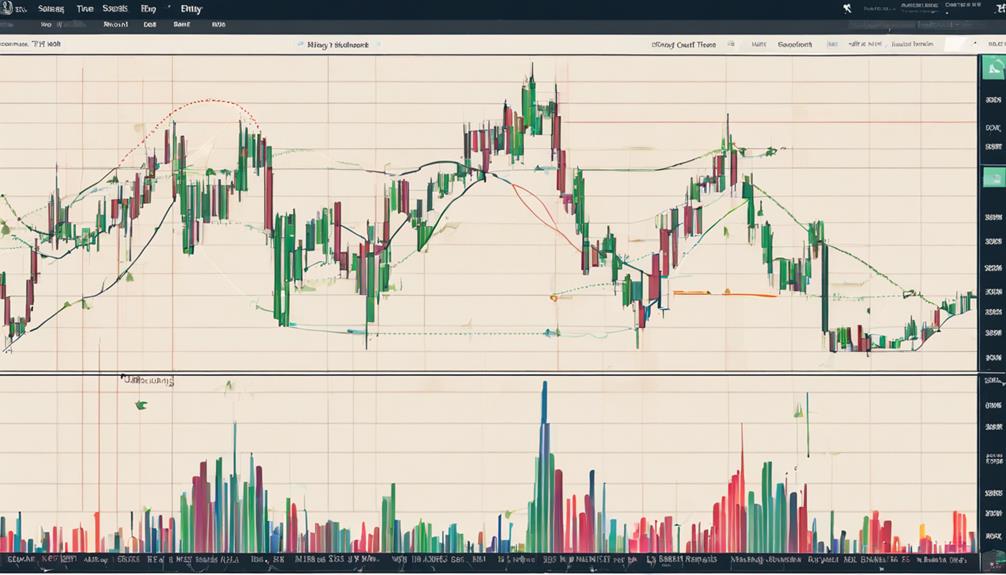
Utilizing the Parabolic SAR indicator in trading strategies offers traders a method to identify potential entry and exit points based on price and SAR dot crossovers. This tool is effective in determining trend direction changes and can be particularly useful in trending markets for implementing trend-following strategies.
Traders often use Parabolic SAR as a trailing stop-loss indicator to protect profits by adjusting the acceleration factor to fine-tune the indicator's sensitivity to price movements. By interpreting the crossovers between the price and SAR dots, traders can generate buy and sell signals, helping them make informed decisions regarding when to enter or exit trades.
The dynamic nature of the Parabolic SAR allows traders to adapt to changing market conditions efficiently. Overall, incorporating Parabolic SAR into trading strategies can enhance decision-making processes and improve overall trading performance.
Parabolic SAR Indicator Combinations
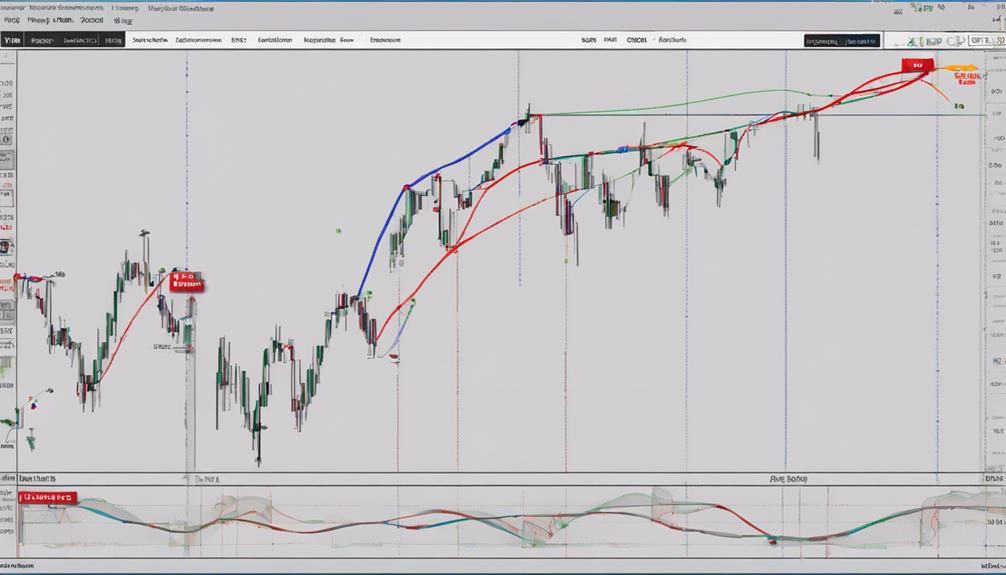
When exploring Parabolic SAR indicator combinations, traders can enhance their analysis by integrating this tool with various technical indicators to gain deeper insights into market trends and potential trading opportunities.
Combining Parabolic SAR with Moving Average Convergence Divergence (MACD) can provide enhanced trend reversal signals, aiding traders in identifying potential shifts in market direction.
Additionally, integrating Parabolic SAR with Exponential Moving Averages (EMA) can offer effective entry and exit points in trending markets, helping traders capitalize on sustained price movements.
Pairing Parabolic SAR with Relative Strength Index (RSI) allows traders to confirm overbought or oversold conditions, leading to more informed trading decisions.
Furthermore, utilizing Parabolic SAR with Bollinger Bands can provide valuable insights into potential price breakouts or breakdowns, assisting traders in identifying volatility and potential entry points.
Lastly, integrating Parabolic SAR with the Average Directional Index (ADX) can help assess trend strength and filter out false signals, further refining trading strategies for improved accuracy in decision-making.
Reliability of Parabolic SAR
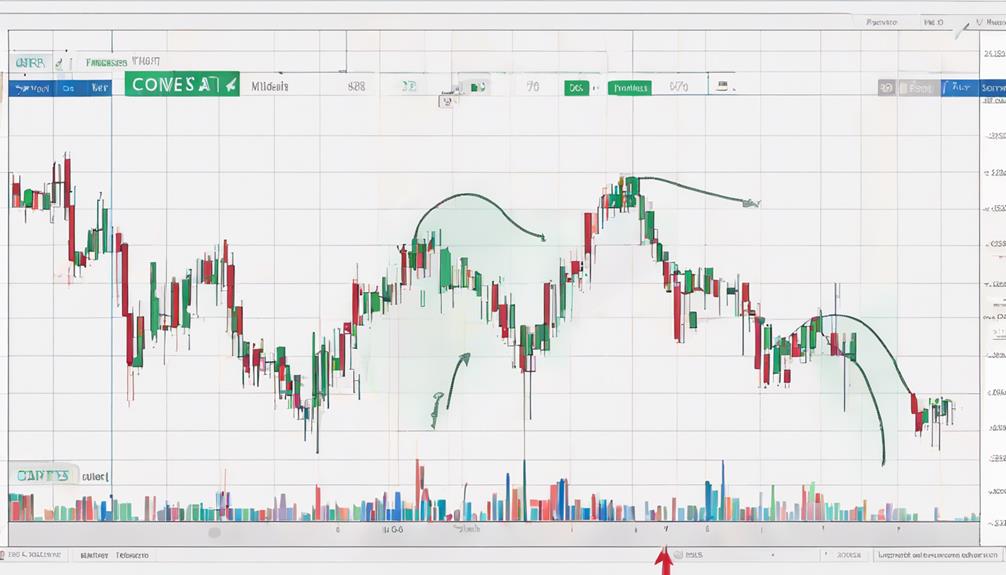
In assessing the reliability of the Parabolic SAR indicator, it is crucial to consider its effectiveness in providing clear signals for buy and sell positions based on dot placements. The indicator's reliability is evident in various aspects of trading:
- Parabolic SAR is dependable for setting trailing stop-loss orders to secure profits during trends.
- Its reliability increases in markets with strong and steady trends.
- Traders often rely on Parabolic SAR for trend identification and reversal signals.
- Combining Parabolic SAR with other indicators enhances its reliability for confirmation in trading decisions.
The indicator's ability to generate precise buy and sell signals, assist in setting stop-loss orders, identify trends, and provide reversal signals makes it a valuable tool for traders seeking to secure profits and make informed trading decisions.
When used in conjunction with other indicators, Parabolic SAR can offer added confirmation and enhance the reliability of trading strategies.
Day Trading With Parabolic SAR
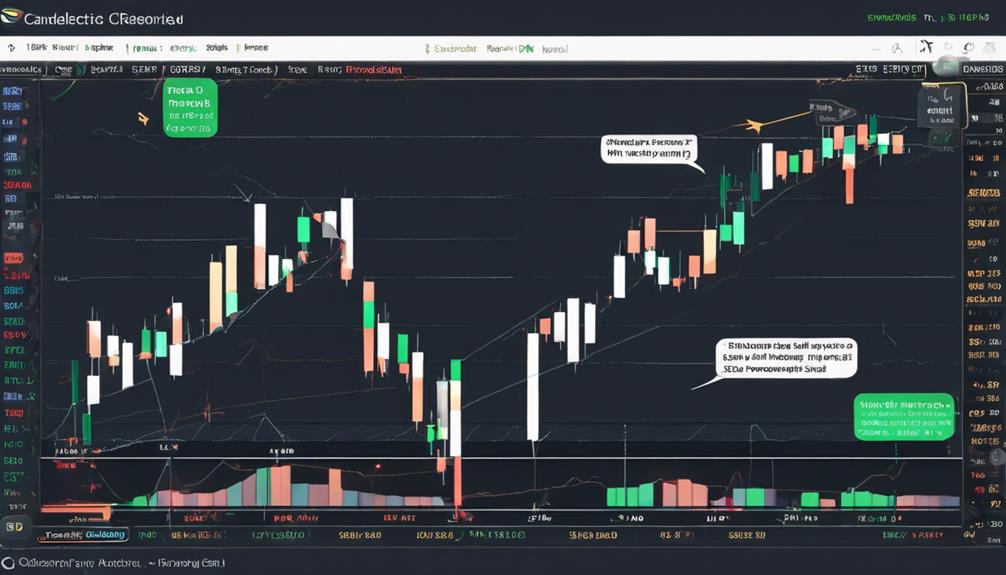
Day traders employ the Parabolic SAR indicator to swiftly identify short-term trends and determine optimal entry and exit points within the fast-paced nature of intraday trading. By utilizing Parabolic SAR in day trading, traders can set tight stop-loss orders to safeguard against sudden price reversals that are common during intraday movements.
The indicator's dots above or below the price provide valuable signals indicating potential trend changes, aiding traders in making quick decisions. Given the rapid pace of day trading, traders often find it beneficial to adjust the settings of the Parabolic SAR to better align with their trading strategies.
Additionally, combining the Parabolic SAR with other intraday indicators such as the Relative Strength Index (RSI) or volume can further enhance the effectiveness of day trading decisions. This integration of multiple indicators can offer a more comprehensive analysis, assisting day traders in navigating the volatility of intraday markets efficiently and effectively.
How Does the Functionality of Parabolic SAR Indicator Compare to Its Signals and Decoding?
The functionality of the Parabolic SAR indicator revolves around decoding Parabolic SAR signals. This indicator provides signals for potential changes in price direction, helping traders identify entry and exit points. By comparing the functionality of the indicator to its signals and decoding, traders can make informed decisions in the market.
Frequently Asked Questions
What Is the Best Strategy for Parabolic Sar?
The best strategy for Parabolic SAR involves utilizing it for trend identification and following, enhancing accuracy with complementary indicators like moving averages or ADX. Adjust the acceleration factor for sensitivity optimization and consider applying it in trending markets for reliable signals.
What Is the Best Acceleration Factor for Parabolic Sar?
The optimal Acceleration Factor (AF) for Parabolic SAR varies based on individual trading preferences. AF of 0.02 is a common starting point, with increments of 0.02 until maxing at 0.2. Adjust AF to align with desired sensitivity for trend analysis.
What Is the Success Rate of Parabolic SAR Indicator?
The success rate of the Parabolic SAR indicator represents its efficiency in signaling buy and sell points. On Heikin Ashi charts, this indicator shows a 63% win rate, affirming its effectiveness in trend identification and potential profitability for traders.
What Time Frame Works Best for Parabolic Sar?
Selecting the optimal time frame for Parabolic SAR hinges on aligning it with one's trading goals, risk appetite, and strategy. Shorter intervals offer frequent signals but increased false alarms, whereas longer periods provide rarer yet potentially stronger indicators. Experimentation aids in pinpointing the most suitable framework.
Conclusion
In conclusion, the Parabolic SAR indicator serves as a valuable tool for traders seeking to maximize profits and manage risk in the market.
Its functionality in identifying trend reversals and trend strength, along with its ability to provide clear entry and exit signals, makes it a popular choice among traders.
By utilizing Parabolic SAR in conjunction with other indicators, traders can enhance their market analysis and develop effective trading strategies for successful outcomes.


